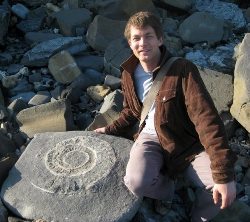 Arjan Reesink* calls for a place to publish and discuss the unforeseen from the geological record.
Arjan Reesink* calls for a place to publish and discuss the unforeseen from the geological record.
Science considers all swans to be white until someone observes a black swan – at which point the white-swan theory needs to be amended. This example from Karl Popper provides a powerful motivation to pay systematic attention to odd rocks.
Our first explanations of the world around us are, inevitably perhaps, based on what we know. This ‘availability bias’ has been implicitly introduced into geological thinking by Hutton and Lyell: our present is the key to Earth’s past. We use our more abundant knowledge of the modern world as our first point of reference for rock interpretations - unavoidable, logical, good practice. Yet we readily accept that current global warming, extensive land use for agriculture, environmental change, and the current sea level high-stand are unusual in geological history. So how do we relate ‘now’ and ‘then’?
Preservation
This question – what elements of a landscape survive geological time – is determined by sedimentary preservation processes. We can investigate the nature of these through theory, numerical experiments, measurement of strata, or experiment. Sandy bedforms, like ripples and dunes, develop fast enough to experimentally test hypotheses on the dynamics of sedimentary preservation in real time. Coupled with statistical insights, these different lines of research have led to the development of a dominant paradigm for sedimentary preservation: erosional scour removes the tops of deposits, and only a small proportion remains. However, river sediments also contain bedforms that are preserved intact. These indicate an absence of later erosion, and therefore refute the original proposition that erosional scour is the only control on sedimentary preservation. Intact bedforms are the ‘black swans’ of river deposits.
So we modify our view. A recent study of fully-preserved dunes reveals that preservation potential changes in the presence of bars and river banks because bar- and bend-scale geomorphology changes local flow patterns and sediment budgets. Preservation of bedforms varies from zero to intact, even within the confines of a single river channel. We are now faced with the task of quantifying precisely how much preservation potential changes within the larger-scale context of bars and river bends. It is a brand new day, all because some bedforms were preserved intact!
Broader lesson
As a community, we often investigate the most abundant rocks. This too, is logical and good practice because it makes the study relevant to more situations. However, focusing on what is average and abundant also makes our understanding vulnerable. We need studies of the unusual and the extreme to identify the limits of our models. This requires that we generate a place where we can publish small accounts of odd observations that are not easy to interpret, and observations that do not have interpretations yet. We need a place to publish and discuss the unforeseen, our ‘black swan rocks’.
* Dr Arnold Jan H Reesink FGS is Research Fellow in Earth Surface Dynamics Geography and Environment, University of Southampton, UK
Further reading
- Reesink A J H, Parsons D R, Van den Berg J, Amsler M L, Best J L, Hardy R J, Lane, S N, Orfeo, O & Szupiany, R (2015) Extremes in dune preservation; controls on the completeness of fluvial deposits Earth Science Reviews, 150, p 652-665
- Nicholas A P, Sambrook Smith G H, Amsler M L, Ashworth P J, Best J L, Hardy R J, Lane S N, Orfeo O, Parsons D R, Reesink A J H, Sandbach S D, Simpson C J, and Szupiany R N (2015) What controls preserved alluvial stratigraphy? Geology – 44.1 3-6